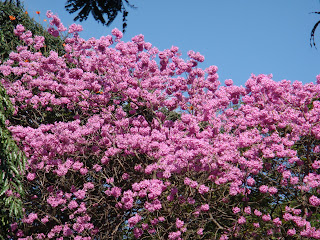
Indira is translated by Marian Maddern. Since I read from an omnibus volume, I don't really have the book cover. I could not find one on the web, so here is a portrait of the author.
The short note on the Omnibus book cover says..."Indira is a lighthearted tale of playful intrigues. Upendra does not realise that his wife Indira is now working as a cook in his friend’s house, and is given a royal run around by Indira and Subhashini, her employer"...
Indira, from an effluent family gets married when young but remains in her father’s house since her father is not willing to send her to her husband Upendra’s house until the boy has earned enough to keep his daughter happy.
One day, Upendra having fulfilled his father-in-law’s condition, sends for his wife. Indira sets out for her husband’s house in a palanquin carried by bearers. But on the way, when the bearers were resting under a banyan tree near Black Lake, the palanquin was robbed by forest brigands and Indira foundd herself all alone, weeping in the middle of a jungle.
She gropes her way out of the jungle, reaches Calcutta and not knowing how to go further, finds shelter in someone’s house where she works as a cook under a pseudonym.
When she had given up hopes of finding her husband, one day a guest arrives at the household and when serving the guest during mealtime, Indira is delighted to notice that the guest is none other than her husband Upendra. While Indira recognizes her husband, Upendra does not recognize her, but is instantaneously attracted to her.
Indira is caught in a dilemma now; if she reveals her true identity to him, she may not be accepted by her husband as she was abandoned by the bandits and may be considered as having fallen from caste on account of having lost chastity.
Both Indira and Sunbhashini, the employer of Indira who is more a sister than an employer, plot a trick to solve this problem.
To know what happened eventually, read the book…
Apart from entertaining the reader, the books gives the reader a general idea about the social norms and conventions of Bengal society during a certain time period when the book was written; about love and relationships and the manner in which society shapes them.
It is a very short story. Just a few pages.
I liked this para from the very last chapter.
One is the poetry of the poet; the other is the riches of the rich. Are the riches of the rich equal to the poetry of the poet? Those who have become important by earning riches and have lost poetry, even they do not say this. They say that it is while the flower is on the tree that it is beautiful; if it is plucked, it is no longer beautiful. Is there as much happiness in the fulfillment of a dream as in the dream itself? As the sky is not really blue but only looks blue, so it is with riches. There is no happiness in riches, we only think that there is. It is poetry which is happiness. For poetry is hope, riches are only possessions.



























































